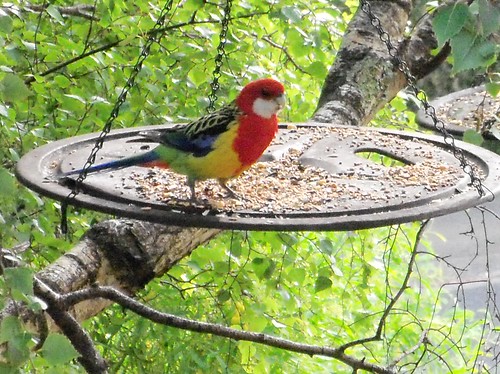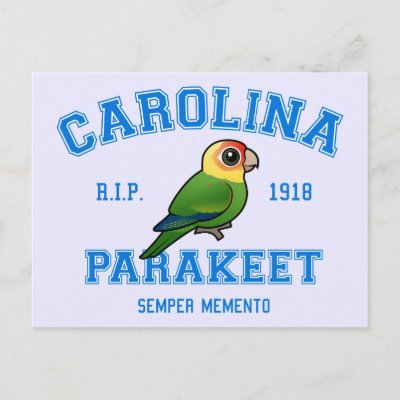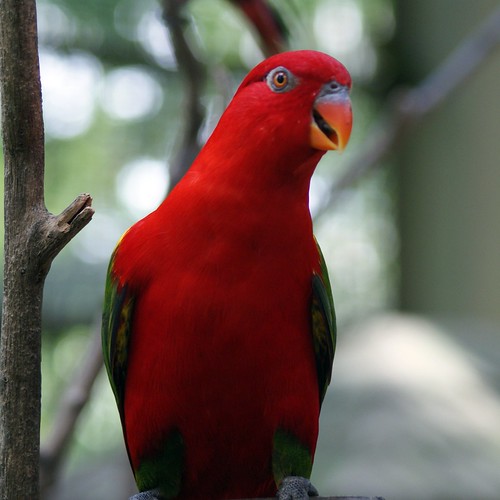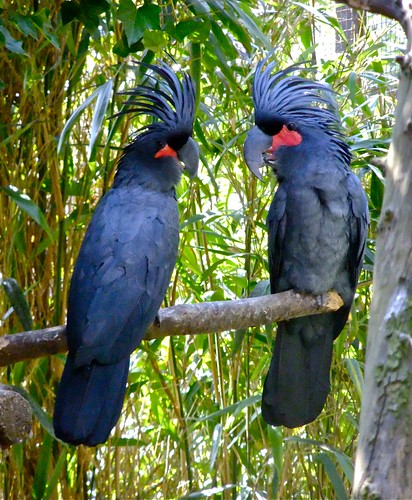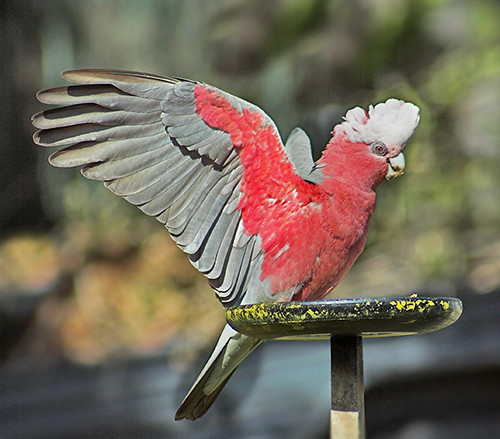Puerto Rico Week
Puerto Rico’s Feathered Treasures: The Island's Endemic Birds
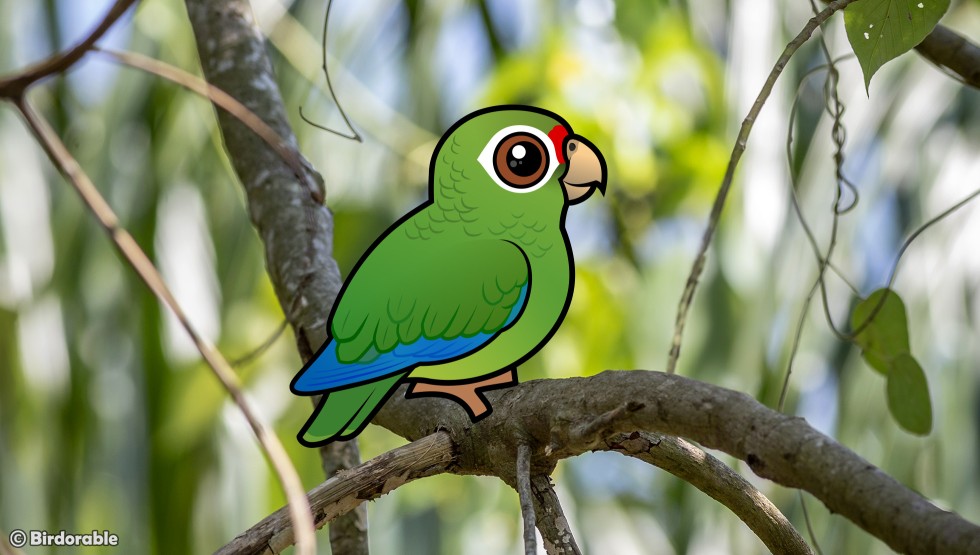
Welcome to Puerto Rico Week on the Birdorable Blog! This week, we’re celebrating the incredible birdlife of Puerto Rico, an island rich in biodiversity and home to unique endemic bird species. From the rare Puerto Rican Amazon to the tiny, energetic Puerto Rican Tody, these birds can’t be found anywhere else in the world. Throughout the week, we’ll explore their habitats, conservation efforts, and fun bird facts that make Puerto Rico a must-visit destination for bird lovers. Stay tuned for exciting posts highlighting the island’s feathered wonders!
Puerto Rico is home to a unique collection of birds that can’t be found anywhere else in the world. These species are known as endemic birds, meaning they have evolved and adapted exclusively to the island’s environment. Endemic birds are found in specific regions due to geographic isolation, which prevents them from interbreeding with other populations. Islands like Puerto Rico are hotspots for endemism because they provide unique habitats, limited migration options, and a stable environment for species to evolve separately from their mainland relatives.
Puerto Rico has 18 endemic bird species, each with its own adaptations and characteristics. Many of them thrive in the island’s forests, wetlands, and coastal regions.
Note that some lists include or exclude different species in their list of endemic birds of Puerto Rico. Depending on the taxonomy used, the splits or lumps accepted, and other factors, some lists include more than or fewer than the 18 species included here.
Here’s a look at Puerto Rico’s endemic birds.
Puerto Rican Amazon
One of the rarest birds in the world, the Puerto Rican Amazon is a bright green parrot with a red forehead and white eye rings. Due to habitat loss and illegal pet trade, this species nearly went extinct, but conservation efforts have helped its population slowly recover. This is one of two Puerto Rican endemics that we currently have on Birdorable (note: we'll add more later this week!). This bird is also known as the Puerto Rican Parrot. We featured a species profile about this bird during our 2024 Bonanza: From Endangered to Hopeful.
Puerto Rican Woodpecker
This special woodpecker is the only woodpecker species native to Puerto Rico. It can be found in forests and urban areas, where it drills into tree trunks in search of insects.
Puerto Rican Tody
A tiny, bright green bird with a red throat and long bill, the Puerto Rican Tody is often seen darting through forests catching insects. Its small size and energetic nature make it a favorite among birdwatchers. There are five species of tody in the world. The Broad-billed Tody and the Narrow-billed Tody are both only found on the island of Hispaniola. The Jamaican Tody is endemic to Jamaica, while the Cuban Tody is found on Cuba and a few small neighboring islands. This little cutie was our 800th Birdorable bird!
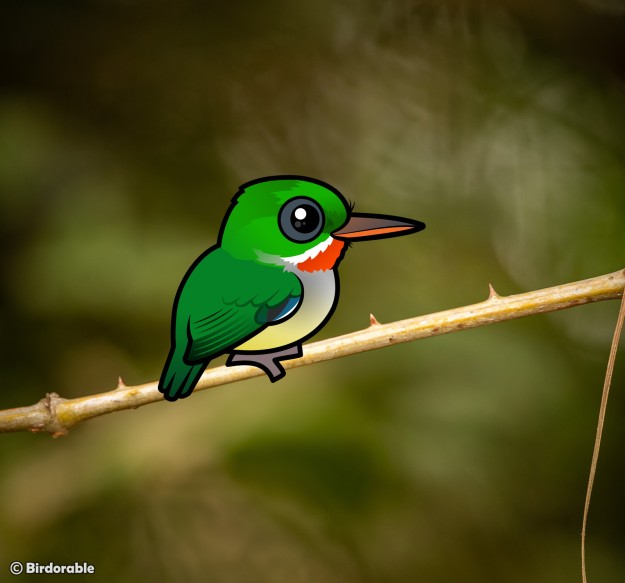
Puerto Rican Flycatcher
This brownish bird is part of the tyrant flycatcher family. It can be spotted perched on branches, waiting to swoop down on insects. Unlike many songbirds, its call is more of a raspy sound than a melodic tune. This species is not included on some lists of Puerto Rican endemics due to possibly having a range that extends off the island.
Puerto Rican Spindalis
Also known as the Puerto Rican Stripe-headed Tanager, this colorful bird has black-and-white facial markings and a bright orange body. Males are more vibrantly colored than females, and they primarily eat fruits and berries. The Puerto Rican Spindalis is the national bird of Puerto Rico.
Puerto Rican Lizard-Cuckoo
As its name suggests, this bird has a diet that includes lizards. It has a long tail, a curved bill, and a striking red eye-ring. Unlike other cuckoos, it does not lay its eggs in the nests of other birds.
Puerto Rican Nightjar
This nocturnal bird is rarely seen but often heard at night. It has a soft, repetitive call and prefers dry forests. Thought to be extinct for much of the 20th century, it was rediscovered in 1961.
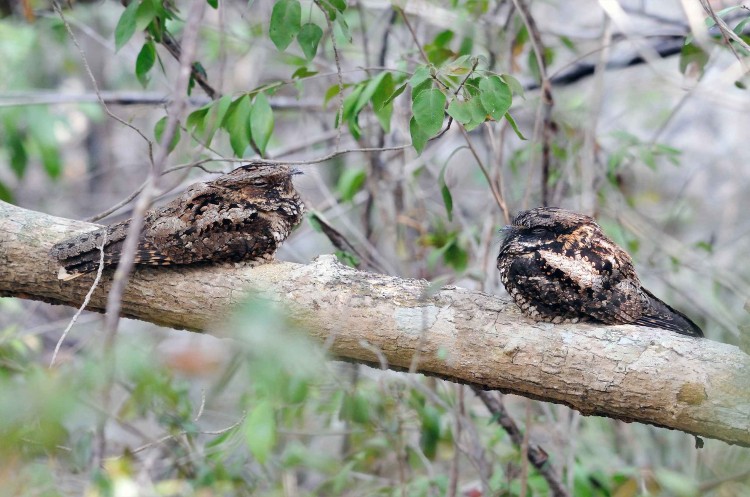
Puerto Rican Nightjars by Mike Morel [CC BY 2.0]
Yellow-shouldered Blackbird
Once common in coastal mangroves, this blackbird has bright yellow shoulder patches. It has faced population declines due to habitat loss and nest parasitism by the Shiny Cowbird.
Puerto Rican Emerald
This small hummingbird has shimmering green feathers and is found in forests and gardens across the island. It feeds on nectar and plays a crucial role in pollination.
Green Mango
Another endemic hummingbird, the Green Mango is slightly larger than the Puerto Rican Emerald. Males are entirely green, while females have a white belly.
Puerto Rican Owl
The Puerto Rican Owl is a small, brown, nocturnal bird of prey with a round head and no ear tufts. Unlike many owls, it has bare legs, which is reflected in its scientific name, nudipes, meaning “bare-footed.” It hunts insects, lizards, and small mammals in forests across the island. This owl is more often heard than seen, with a distinctive, repetitive call that echoes through the night.
Puerto Rican Euphonia
The Puerto Rican Euphonia is a small, brightly colored songbird with a striking yellow belly and a deep blue cap. Males are more vibrant, while females have a duller greenish hue. This species is often found in forests and coffee plantations, feeding on fruits and berries.
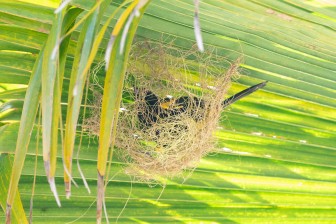
Puerto Rican Oriole on nest by Ryan Mandelbaum [CC BY 2.0]
Puerto Rican Oriole
A striking black-and-yellow bird, the Puerto Rican Oriole builds hanging nests and is often found in forests and gardens. It primarily feeds on nectar, fruit, and insects.
Puerto Rican Vireo
A small grayish bird with a distinct song, the Puerto Rican Vireo is often seen in forests foraging for insects.
Elfin-woods Warbler
This rare warbler was only discovered in 1971. It has black-and-white plumage and prefers the high-altitude forests of Puerto Rico. Unlike many other warblers, it does not migrate.
Adelaide’s Warbler
A bright yellow warbler with grayish wings, this bird is active and vocal. It prefers dry forests and coastal areas.
Puerto Rican Tanager
This comparatively dull tanager species is mostly found in high-altitude forests. It travels in small groups, searching for insects, fruits, and seeds.
Puerto Rican Bullfinch
A small, dark bird with a thick bill, the Puerto Rican Bullfinch is known for its intelligence and adaptability. It primarily feeds on seeds and insects.
Puerto Rico’s endemic birds are a vital part of the island’s biodiversity. Many of these species face threats from habitat destruction, climate change, and invasive species. Conservation programs, including habitat protection and captive breeding, have helped prevent extinctions, but continued efforts are necessary to ensure these birds thrive for future generations.













